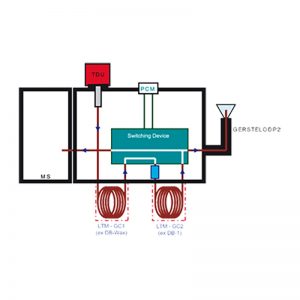A multi-residue method for determination of five groups of 85 pesticides – organochlorine, carbamate, organophosphorous, pyrethroid and others – in non-fatty food, e.g. vegetables, fruits and green tea is described. The method is based on stir bar sorptive extraction (SBSE) coupled to thermal desorption (TD) and retention time locked (RTL) GC-MS in the scan mode. Samples are extracted with methanol and diluted with water prior to SBSE. Dilution of the methanol extract before SBSE was optimized to obtain high sensitivity, and to minimize sample matrix effects (particularly for the pesticides with high log Ko/w values). The optimized method consists of a dual SBSE extraction performed simultaneously on respectively a twofold and a fi vefold diluted methanol extract. After extraction, the two stir bars are placed in a single glass thermal desorption liner and are simultaneously desorbed. The method showed good linearity (r2 >0.9900) for 66 pesticides and high sensitivity (limit of detection: < 5 μg/kg) for most of the target pesticides. The method was applied to the determination of pesticides at low μg/kg levels in tomato, cucumber, green soybeans, spinach, grapes and green tea.
- Home
- About Us
- Products
- Automated Sample Preparation
- Advanced Analysis Technique
- Ion Chromatography
- Particle Size & Shape
- Zeta Potential Analyzer
- Surface Chemistry
- Spectroscopy
- Powder Characteristic
- Elemental Analyzer – Combustion
- Cleaning & Washing System
- Microwave Digestion System
- 3D Electronic Printing
- LabAlliance Instruments
- Services
- Application
- Contact Us
- Home
- About Us
- Products
- Automated Sample Preparation
- Advanced Analysis Technique
- Ion Chromatography
- Particle Size & Shape
- Zeta Potential Analyzer
- Surface Chemistry
- Spectroscopy
- Powder Characteristic
- Elemental Analyzer – Combustion
- Cleaning & Washing System
- Microwave Digestion System
- 3D Electronic Printing
- LabAlliance Instruments
- Services
- Application
- Contact Us
Multi-Residue Method for the Determination of Five Groups of Pesticides in Non-Fatty Food Samples by Dual Stir Bar Sorptive Extraction (Dual SBSE) and Thermal Desorption GC-MS*
You are here:
- Home
- Lab Application
- Multi-Residue Method for the Determination…





